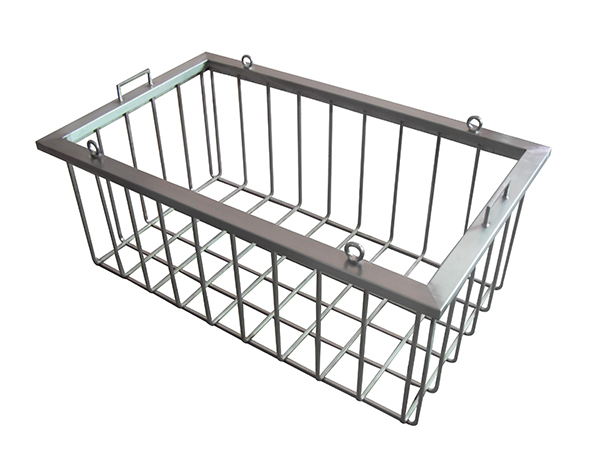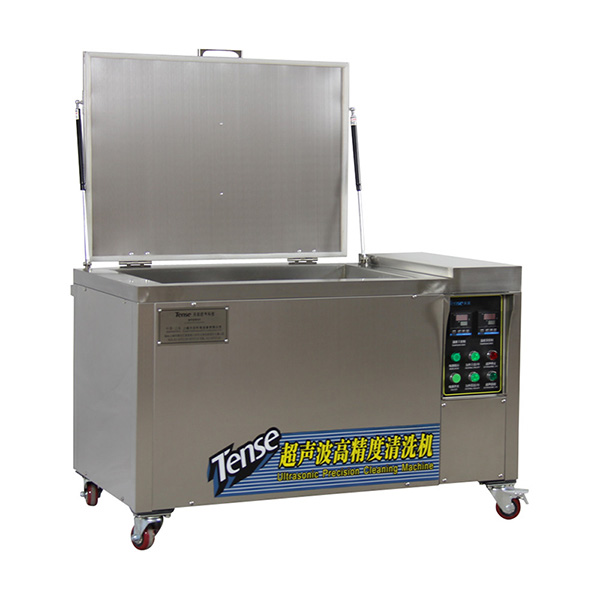(1) Selection of power
Ultrasonic cleaning sometimes uses low power and takes a long time without removing dirt. And if the power reaches a certain value, the dirt will be removed quickly. If the selected power is too large, the cavitation strength will be greatly increased, and the cleaning effect will be improved, but at this time, the more precise parts also have corrosion points, and the cavitation of the vibrating plate at the bottom of the cleaning machine is serious, the water point corrosion also increases, and the strong Under the power, the cavitation corrosion on the bottom of the water is more serious, so the ultrasonic power should be selected according to the actual use.
(2) Selection of ultrasonic frequency
The ultrasonic cleaning frequency ranges from 28 kHz to 120 kHz. When using water or water cleaning agent, the physical cleaning force caused by cavitation is obviously beneficial to low frequencies, generally around 28-40 kHz. For cleaning parts with small gaps, slits and deep holes, it is better to use high frequency (generally above 40kHz), even hundreds of kHz. Frequency is proportional to density and inversely proportional to strength. The higher the frequency, the greater the cleaning density and the smaller the cleaning strength; the lower the frequency, the smaller the cleaning density and the greater the cleaning strength.
(3) Use of cleaning baskets
When cleaning small parts, mesh baskets are often used, and special attention should be paid to the ultrasonic attenuation caused by the mesh. When the frequency is 28khz, it is better to use a mesh of more than 10mm.

(4) Cleaning fluid temperature
The most suitable cleaning temperature of the water cleaning solution is 40-60℃, especially in cold weather, if the temperature of the cleaning solution is low, the cavitation effect is poor, and the cleaning effect is also poor. Therefore, some cleaning machines wind a heating wire outside the cleaning cylinder to control the temperature. When the temperature rises, cavitation is easy to occur, so the cleaning effect is better. When the temperature continues to rise, the gas pressure in the cavitation increases, causing the impact sound pressure to drop, and the effect will also weaken.
(5) Determination of the amount of cleaning fluid and the location of cleaning parts
Generally, it is better that the cleaning liquid level is more than 100mm higher than the surface of the vibrator. Because the single-frequency cleaning machine is affected by the standing wave field, the amplitude at the node is small, and the amplitude at the wave amplitude is large, resulting in uneven cleaning. Therefore, the best choice for cleaning items should be placed at the amplitude. (The more effective range is 3-18 cm)
(6) Ultrasonic cleaning process and selection of cleaning solution
Before purchasing a cleaning system, the following application analysis should be done on the cleaned parts: Determine the material composition, structure and quantity of the cleaned parts, analyze and clarify the dirt to be removed, these are all to decide what cleaning method to use and judge the application Aqueous cleaning solutions are also a prerequisite for the use of solvents. The final cleaning process needs to be verified by cleaning experiments. Only in this way can a suitable cleaning system, a rationally designed cleaning process and a cleaning solution be provided. Considering the influence of the physical properties of the cleaning fluid on ultrasonic cleaning, the vapor pressure, surface tension, viscosity and density should be the most significant influencing factors. Temperature can affect these factors, so it also affects the efficiency of cavitation. Any cleaning system must use cleaning fluid.
Post time: Sep-08-2022

